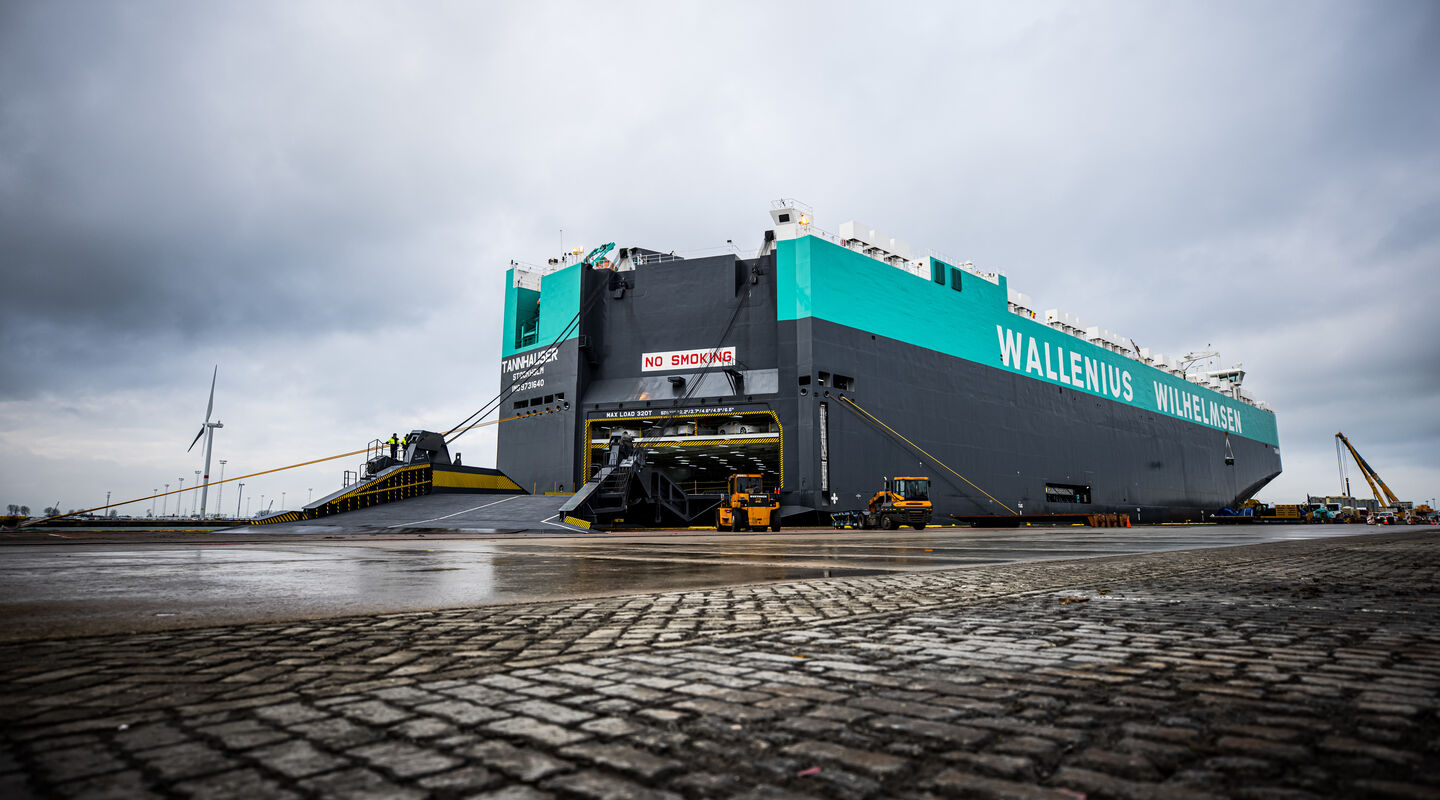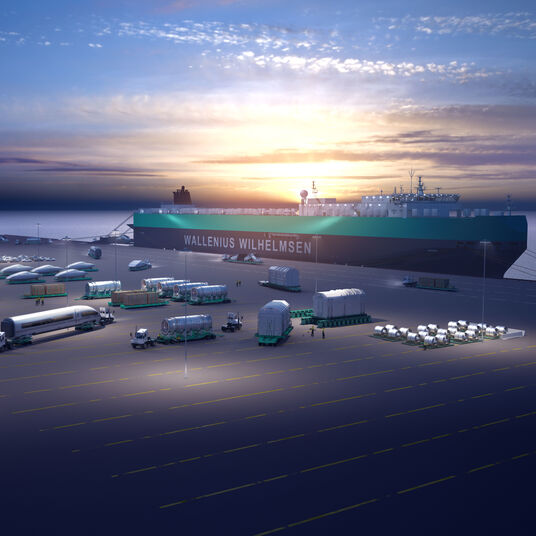What is RoRo?
RoRo is short for 'Roll-on, Roll-off', which describes how products are loaded and discharged from a vessel. Read on to learn more about RoRo.

RoRo allows your products to roll on and off the vessel, as opposed to being lifted onboard using cranes. Self-propelled products, such as cars and tractors, roll on and off the vessel on their own wheels. Products that are not self-propelled are placed on handling equipment with wheels in the terminal to be rolled on and off the vessel. Your product thus remains on the handling equipment for the entire sea voyage.
Loading and discharge are via a wide stern ramp. The ramp capacity on our vessels can be up to 500 tonnes, whereas most other RoRo carriers have ramp capacities of around 150 tonnes. Shipping your products the RoRo way is a secure and efficient process as less lifting is required and loading is not weather-dependent.
WW Ocean’s RoRo vessels are designed to transport a range of products from auto and rolling equipment to breakbulk cargo. A RoRo vessel have up to 13 decks, and it works like a car park with liftable ramps connecting the decks. Your products are placed onto the most appropriate deck, depending on their weight, height and length, and safely secured with lashings.
With their strong body hull and deadweight ranging from 30,000 to 50,000 tonnes, the ‘high and heavy’ decks on our RoRos can withstand up to 10 tonnes of pressure per square metre, and are therefore perfectly suited to carrying heavy cargo.


